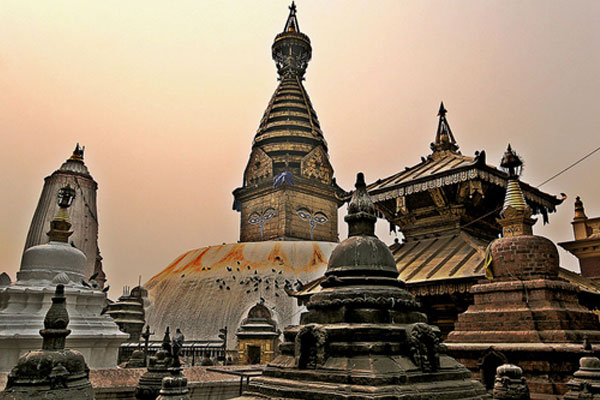
Nepal; the Himalayan country is well known for its high mountains. But also Nepal is very famous for cultural and historical sites. Nepal has an uncountable cultural, religious and historical site which still amazes the world. Every historical and cultural site has its own feature and meaning. Out of those historical sites, UNESCO has recognized ten sites as world Heritage sites. Out of ten world heritages sites two are natural heritage sites and seven are historical and cultural sites.
Because of its unique architect and rich cultural importance, UNESO has listed two cultural sites and two natural sites as ‘World Heritage Site’. Cultural Sites include Kathmandu Valley and Lumbini, the birthplace of Lord Buddha. Kathmandu valleys include seven historical and cultural sites. Chitwan National Park and Sagarmatha National Park are listed as UNESCO Natural World Heritage Sites. Listed below are the ten world heritage sites of Nepal.
Pashupatinath Temple: The Pashupatinath Temple is considered as one of the holiest places for the Hindus. It is located 6 kilometers east of Kathmandu. The structure is a two-story building and is built in pagoda style. The site is a collection of temples, ashrams, images and inscriptions. Pashupatinath Temple is situated at right side of the banks of the holy Bagmati River. The temple has been on the UNESCO World Heritage sites list since 1979.
Bouddhanath Stupa: Bouddhanath Stupa is one of the oldest and biggest monuments enlisted in the UNESCO world heritage sites. The stupa was built in around the 5th century A.D. It is a 36 –meter high unique three-level Mandala style structure. People following Buddhist religion flock in thousands during the Buddhist festivals.
Swayambunath Stupa: Swayambunath Stupa is believed to be around 2500 years old and because of this, it is considered probably one of the oldest monuments making its name on the list. The structure represents the four elements of earth, fire, wind, and water. The 13 rings of the spire symbolize the 13 steps of the ladder leading to Nirvana. There are 365 steps passing through which you will reach the holy site of Swayambunath stupa. The temple is listed in UNESCO world heritage sites in 1979.
Kathmandu Durbar Square: Kathmandu Durbar Square is an ancient royal courtyard which lies in the heart of the capital city, Kathmandu. Another name for Kathmandu Durbar Square is Hanuman Dhoka Palace. There are many temples which are dedicated to different Hindu deities. Most of the buildings here were constructed from the 15th – 18th centuries. The palace is named after the Hindu god Hanuman, who is regarded as the protector of the entire palace.
Patan Durbar Square: Patan Durbar Square is situated at just 8 kilometer south-east of Kathmandu city. It is one of the oldest cities in Kathmandu valley. The city was founded in the 3rd century. It is an open museum of the finest Newari craftsmanship. The Hindu and Buddhist monuments are scattered around this ancient royal courtyard.
Bhaktapur Durbar Square: Bhaktapur Durbar square a unique city located 13 kilometers east of Kathmandu. It is also known as Bhadgaon. It is the complex consists of at least four distinct squares. They are namely Durbar Square, Taumadhi Square, Dattatreya Square, and Pottery Square. The collective distinct squares are known as the Bhaktapur Durbar square.
Changu Narayan Temple: Changu Narayan Temple is located on a high hilltop that is also known as Changu. This historic structure was built around the 3rd century A.D. The area was surrounded by forest with a champak tree and a small village known as Changu Village. It is located 12 kilometer east of Kathmandu and few miles north of Bhaktapur.
Lumbini is the birthplace of Lord Buddha and it was enlisted as a UNESCO World Heritage sites in 1997. It is one of the holiest places for Buddhist pilgrimages. There are several temples including the Mayadevi Temple along with many others which are under repair. Many monuments, monasteries, and a museum, the Lumbini International Research Institute is also within this holy site.
The Chitwan National Park is the first national park in Nepal and was established in the year 1973. It was granted the status of World Heritage site in 1984. Chitwan National Park was formerly known as the Royal Chitwan National Park. This park is home to many different species of wildlife. These also include the famous Asian one-horned rhino and the Royal Bengal tiger. +View Detail
Sagarmatha National Park is located in Solukhumbu district of Nepal which has made to the UNESCO World Heritage Sites. It became the country’s first national park which was inscribed as a Natural World Heritage site in 1979. +View Detail